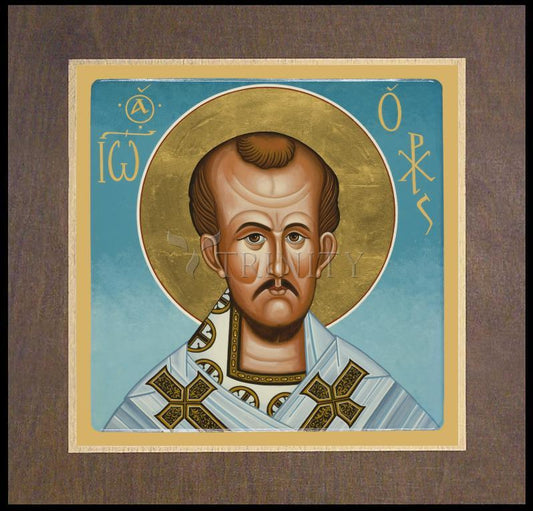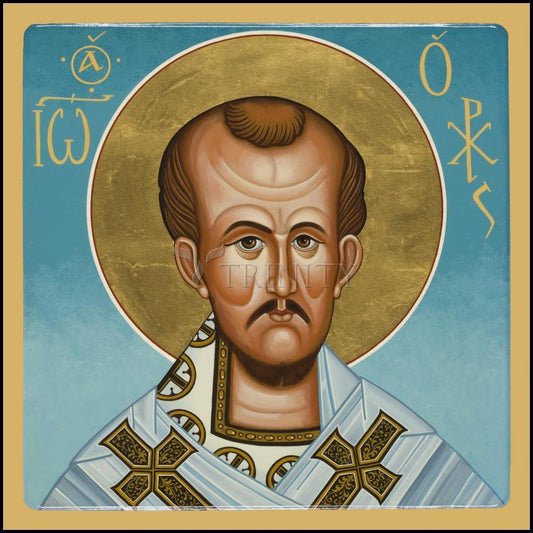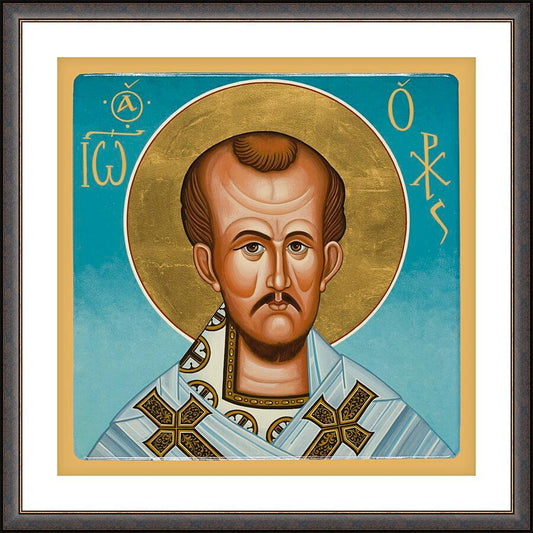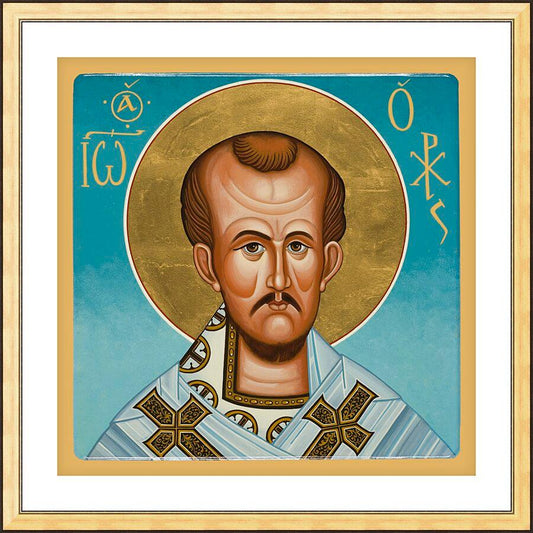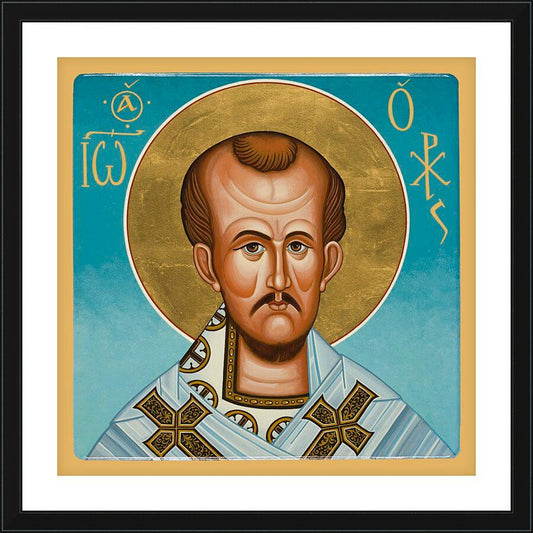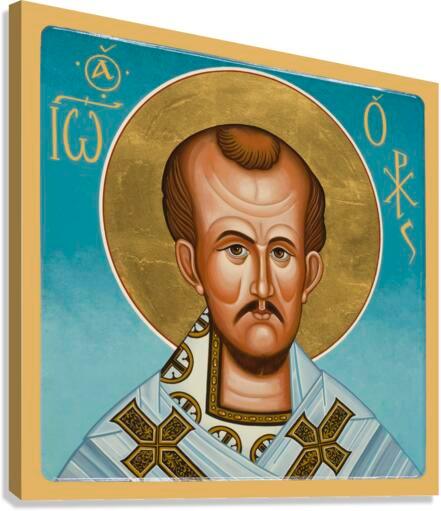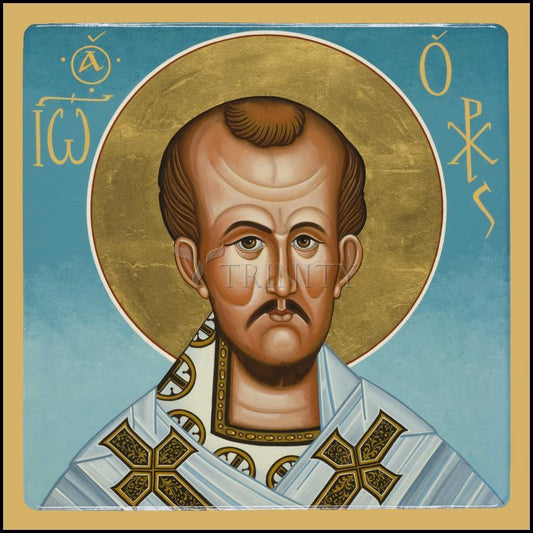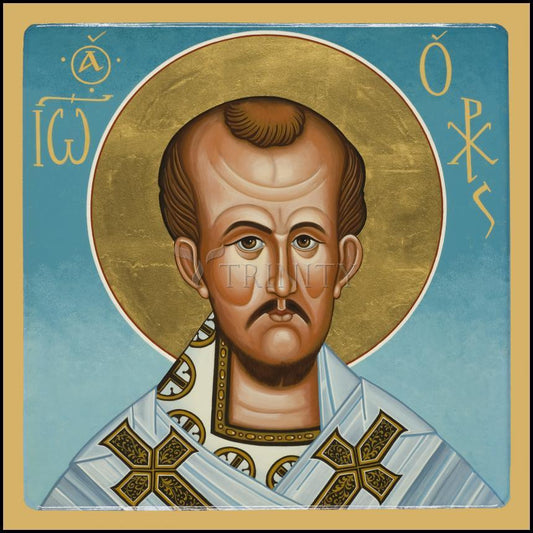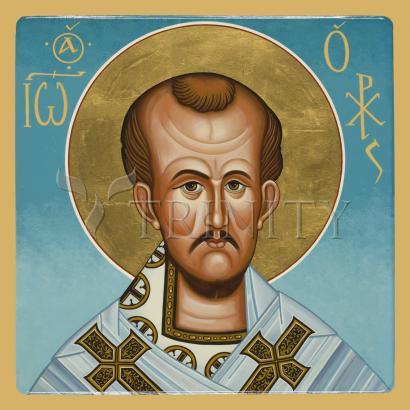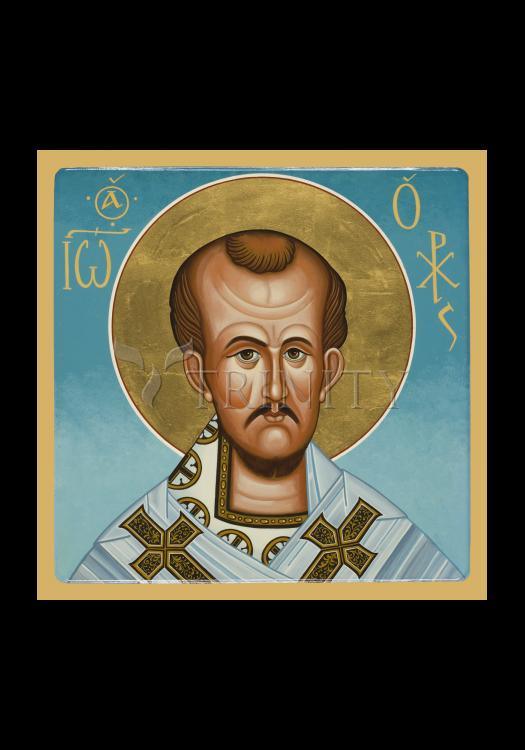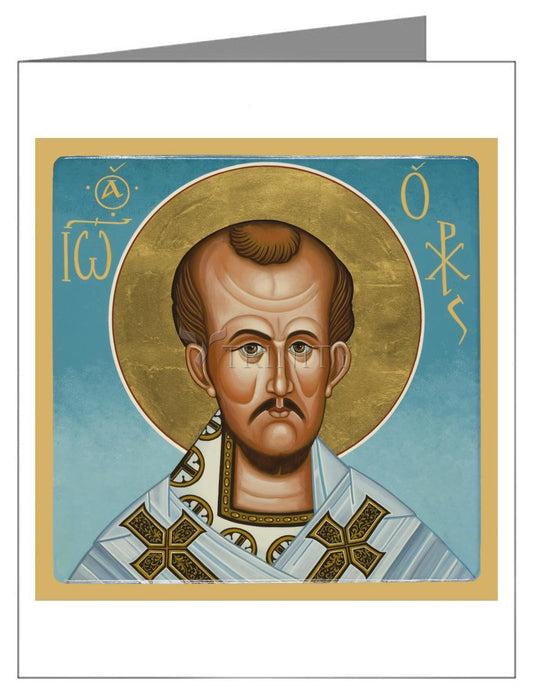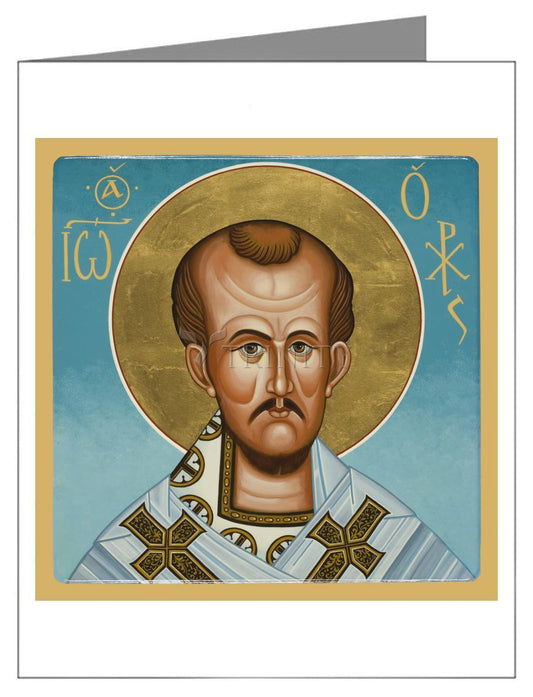St. John, named Chrysostom (golden-mouthed) on account of his eloquence, came into the world of Christian parents, about the year 344, in the city of Antioch. His mother, at the age of 20, was a model of virtue. He studied rhetoric under Libanius, a pagan, the most famous orator of the age.
In 374, he began to lead the life of an anchorite in the mountains near Antioch, but in 386 the poor state of his health forced him to return to Antioch, where he was ordained a priest.
In 398, he was elevated to the See of Constantinople and became one of the greatest lights of the Church. But he had enemies in high places and some were ecclesiastics, not the least being Theophilus, Patriarch of Alexandria, who repented of this before he died. His most powerful enemy, however, was the empress Eudoxia, who was offended by the apostolic freedom of his discourses. Several accusations were brought against him in a pseudo-council, and he was sent into exile.
In the midst of his sufferings, like the apostle, St. Paul, whom he so greatly admired, he found the greatest peace and happiness. He had the consolation of knowing that the Pope remained his friend, and did for him what lay in his power. His enemies were not satisfied with the sufferings he had already endured, and they banished him still further, to Pythius, at the very extremity of the Empire. He died on his way there on September 14, 407.



